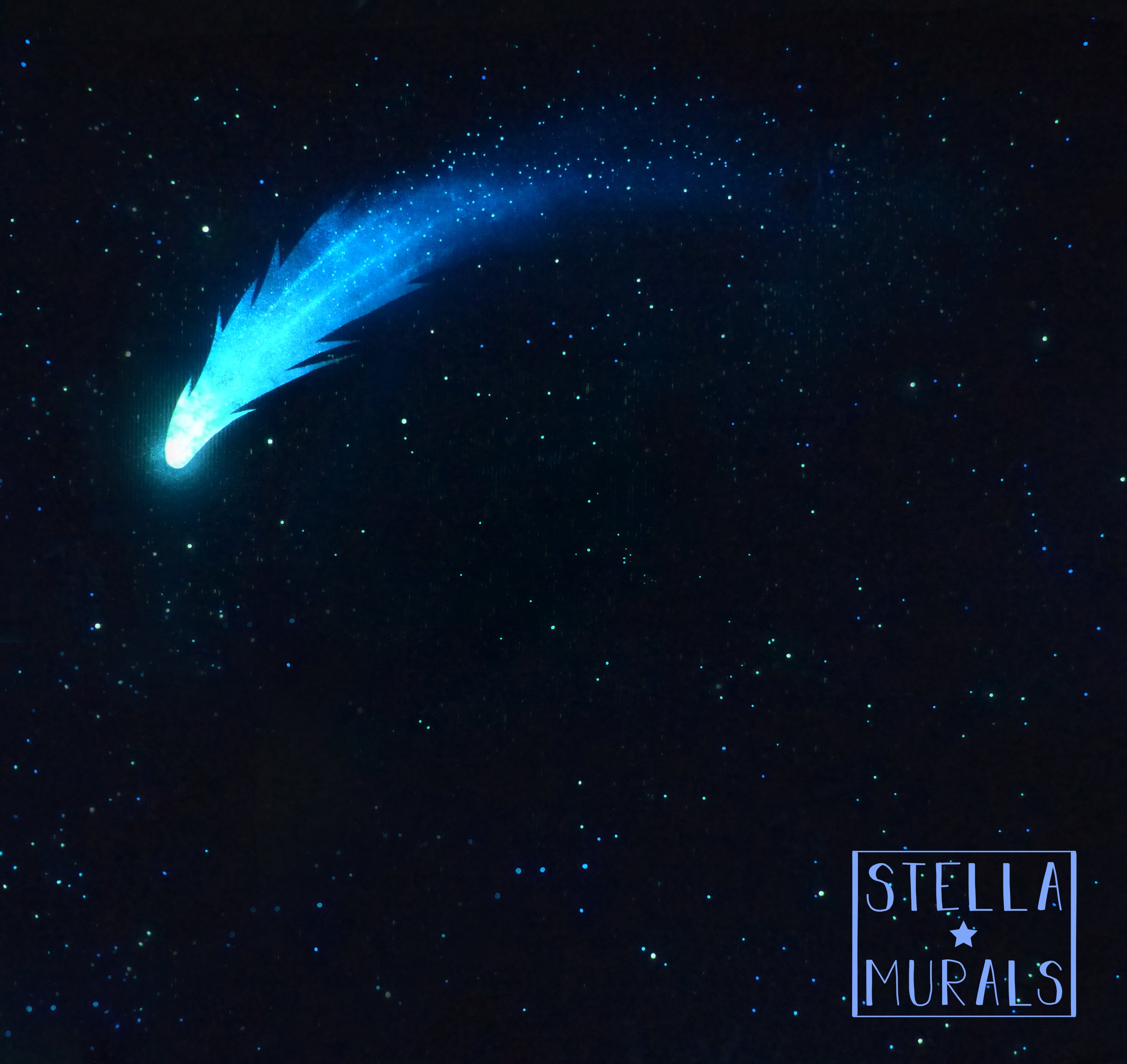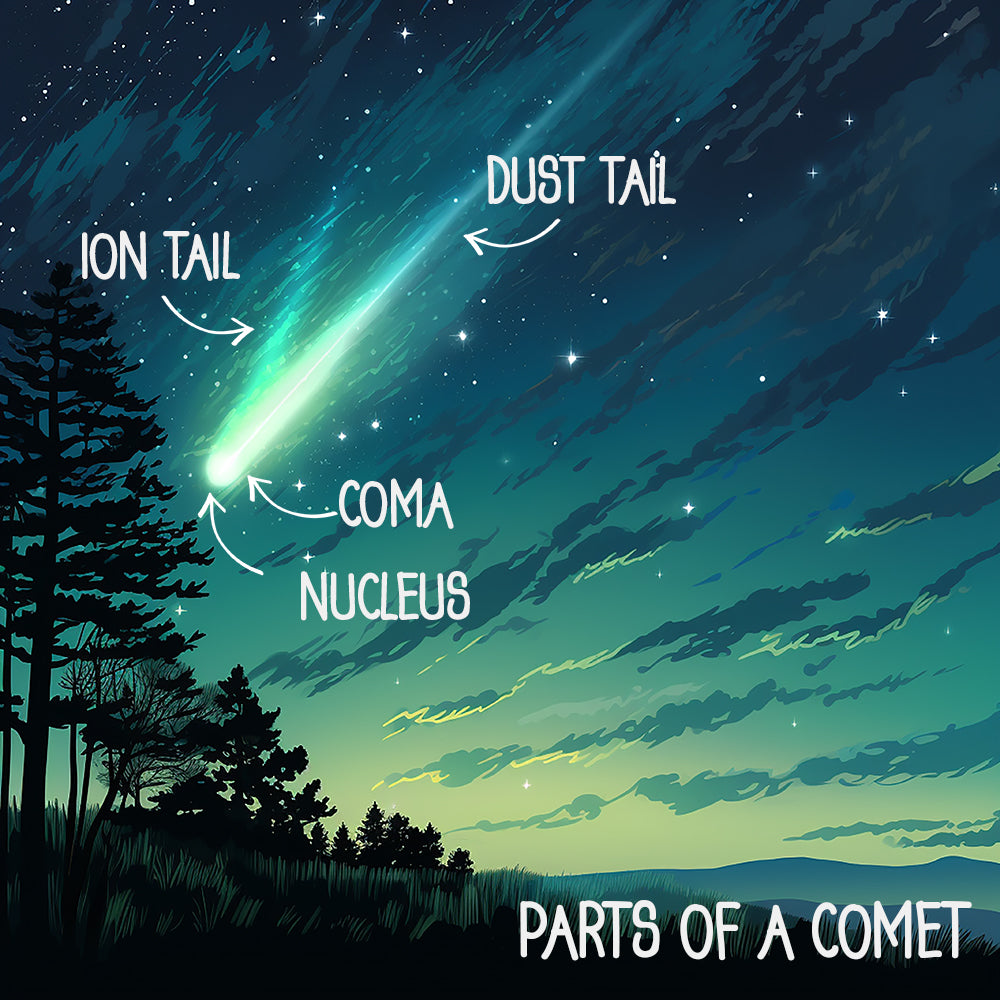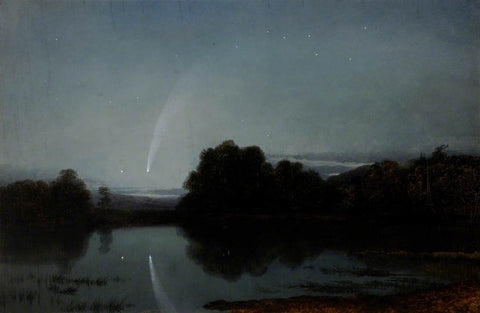
A Comet's Tale
What Are Comets?
Comets are cosmic snowballs composed of ice, dust, and volatile gases. These wanderers originate from the outer regions of our solar system, specifically the Oort Cloud and the Kuiper Belt. Unlike planets, comets have elliptical orbits, bringing them close to the Sun at times and then sending them back into the depths of space.
A Quick Comet Anatomy:
-
The Nucleus: The solid core of a comet is called the nucleus, consisting of water ice, frozen gases, dust, and organic compounds. It is relatively small, often just a few kilometers in diameter. Some glow green!
-
Coma: As a comet approaches the Sun, solar radiation causes the nucleus to release gases, creating a glowing atmosphere called the coma. This is the bright, fuzzy cloud that surrounds the nucleus.
-
Tail: The most iconic feature of comets is their tail. As solar wind and radiation push against the released gases in the coma, a tail is made. There are two types of tails: the ion tail, which is composed of gas, and the dust tail, made up of tiny dust particles.

Some Famous Comets:
Halley's Comet: One of the most famous comets, Halley's Comet, visits the inner solar system approximately every 76 years. Its last appearance was in 1986, and it won't be visible again until 2061. Halley's Comet has been observed throughout history, with sightings dating back to ancient civilizations.
Hale-Bopp Comet: In 1997, the Hale-Bopp Comet graced the night sky with its breathtaking display. It was visible to the naked eye for an extended period, becoming one of the most widely observed comets of the 20th century.
The Great Comet of 1680: This comet, also known as Kirch's Comet, was one of the brightest comets ever recorded. Its luminosity was so intense that it was visible even during the daytime.
Famous Decpictions of Comets in Art:
"Donati's Comet" by James Poole in 1858: Named after the Italian astronomer who first observed it, the painting captures the reflection of the comet in a dark night time lake, emphasizing its extraordinarily long tail. The celestial visitor dominates the canvas, its brilliance mirrored in the calm waters below. Also shown is the constellation of Ursa Major and besides the comet, the bright star Arcturus, from Bootes the herdsman also reflected in the dark waters.

"The Bayeux Tapestry” 11th century, an embroidered cloth showing the Norman invasion of England in 1066 also shows the appearance of Halley’s comet that springtime. Next to the comet is embroidered the Latin words: "ISTIMIRANT STELLA." Translated: "They marvelled at the star."
Stella is the Latin word for star, it's why I chose it.

Quick links
About Stella Murals
Stella Murals is an Australian based glow in the dark art studio. Started in 2011, owned and operated exclusively by artist Esther Iranyi.

Leave a comment: